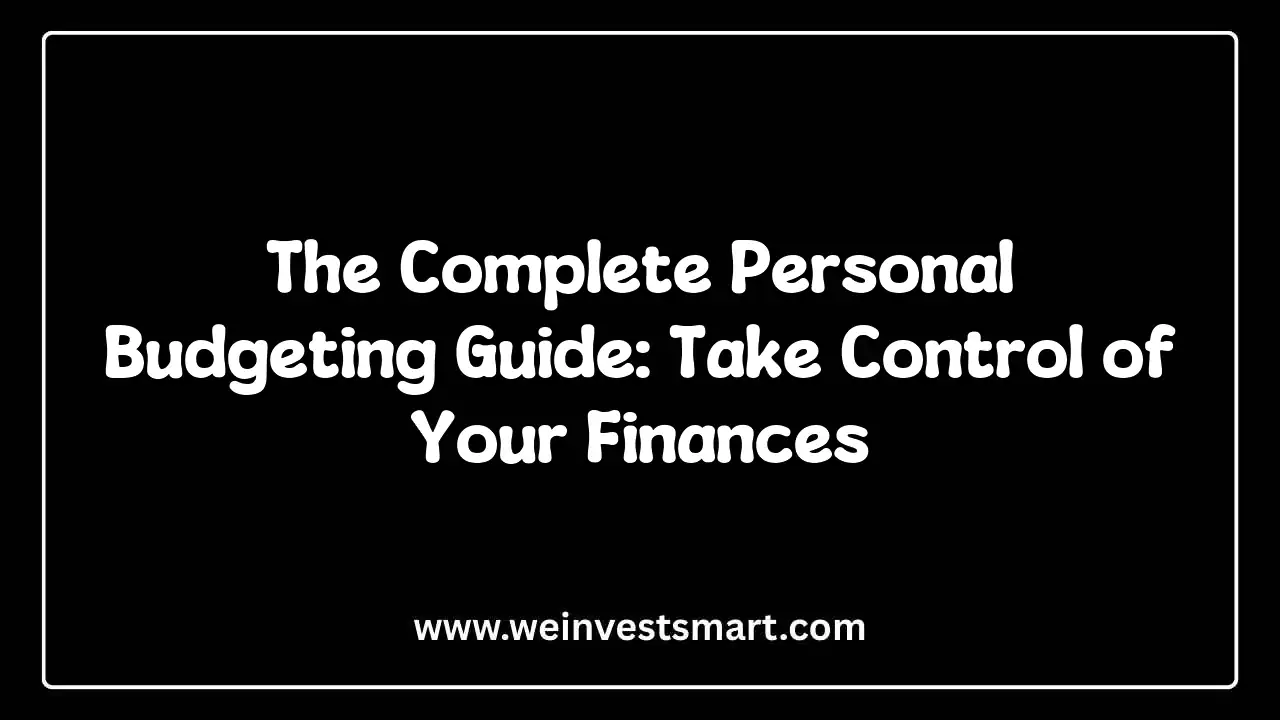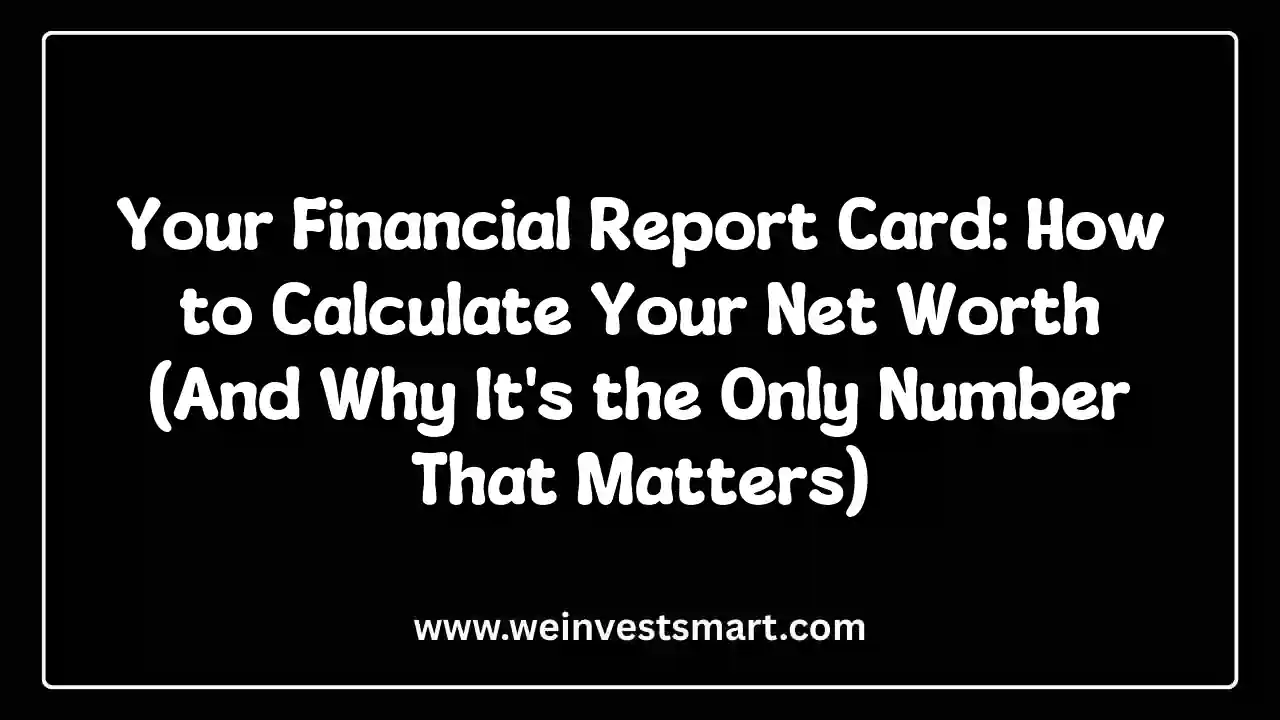· WeInvestSmart Team · personal-finance · 10 min read
How to Perform a Monthly Financial "Fire Drill": Your 1-Hour Financial Health Checkup
This guide provides a simple, repeatable 1-hour monthly checklist for a financial health checkup. Learn how to review your budget, track net worth, check for credit errors, and monitor your score.
Most people treat their personal finances like a haunted house. They know something is lurking in the dark—a forgotten subscription, a creeping credit card balance, a budget that’s more fiction than fact—but they’re too afraid to turn on the lights. Going straight to the point, this avoidance isn’t just irresponsible; it’s a direct invitation for a full-blown financial crisis. The uncomfortable truth is that financial problems rarely appear overnight. They build up silently, month after month, in the darkness of neglect.
We’re taught to prepare for fires with drills, for storms with emergency kits, but we’re expected to navigate financial emergencies with nothing but panic and regret. This is an absurd standard. What if you could run a “fire drill” for your finances? A simple, repeatable, one-hour checkup each month to ensure your financial house isn’t about to go up in flames. This isn’t about complex spreadsheets or marathon budgeting sessions. This is about creating a deliberate, non-negotiable routine to look your money square in the eye.
Here’s where things get interesting. This monthly ritual does more than just keep you organized; it fundamentally rewires your relationship with money. It transforms you from a passive victim of your financial circumstances into the active, confident CEO of your own financial life. The feeling of control you gain is transformative. And this is just a very long way of saying that spending one hour a month on this checklist is the highest-return investment you can possibly make in your financial well-being.
The Psychology of the Financial “Fire Drill”
Before we lay out the checklist, we need to understand why this approach works when so many others fail. Most people don’t track their finances because it feels like a judgment. They see a long list of expenses and immediately feel shame or regret. The goal of the financial fire drill is the opposite. It’s not about judgment; it’s about diagnosis. You are not your spending habits from last month. You are a forward-looking decision-maker gathering data to make better choices next month.
Going straight to the point, this structured routine bypasses emotional decision-making. Just as a firefighter follows a practiced procedure without panicking, you’ll follow this checklist to assess the situation calmly and logically. The funny thing is, the more you do it, the less scary it becomes. The monsters in the dark disappear when you shine a consistent light on them. You start to see patterns, identify leaks, and celebrate small wins.
This sounds like a trade-off—giving up an hour of your time—but it’s actually a desirable thing. We covet this routine because it buys back countless hours of ambient financial anxiety. That low-grade, persistent worry about money that hums in the background of your life? This is how you silence it. You replace fear of the unknown with the confidence of knowing exactly where you stand.
You may also be interested in: Before You Even Make a Budget: The 5 Foundational Money Mindsets You Need to Adopt
Your 1-Hour Financial Fire Drill: The 5-Point Checklist
Set a recurring calendar appointment for the same time each month. Treat it like a critical meeting you cannot miss. Pour a coffee, put on some music, and let’s get started. The goal is momentum, not perfection.
1. The 15-Minute Budget Review: Where Did the Money Really Go?
Your budget isn’t a stone tablet; it’s a living document that needs to adapt. The first step is to compare the map (your budget) to the territory (your actual spending).
- Gather Your Data (5 mins): Log into your bank and credit card accounts. Most have features that automatically categorize your spending. If not, a quick scan of your statements is all you need. Don’t get bogged down in every single penny. We’re looking for big trends, not loose change.
- Identify Red Flags (5 mins): Where did you overspend? Was it a one-time event (like a friend’s wedding) or a recurring pattern (like too many weekday lunches out)? The goal here is awareness, not self-flagellation. If the “Dining Out” category is consistently double what you planned, the budget is wrong, not you.
- Adjust for Next Month (5 mins): Based on your review, make realistic adjustments for the upcoming month. If you consistently overspend on groceries, maybe you need to increase that budget category and decrease another, like entertainment. This is a game of trade-offs. The budget must reflect reality to be a useful tool.
2. The 10-Minute Net Worth Check: The Ultimate Scoreboard
Income is how you keep score day-to-day, but net worth is how you win the game. This is the single most important metric for your long-term financial health, and tracking it monthly is a powerful motivator.
- List Your Assets (5 mins): An asset is anything you own that has monetary value. Jot down the current balances of your checking, savings, and investment accounts (including retirement funds like your 401(k) or IRA). For major assets like your home or car, you can update their estimated value once or twice a year; for the monthly check-in, just use the latest figure you have.
- List Your Liabilities (3 mins): Liabilities are what you owe. List the current balances on your mortgage, car loan, student loans, and all credit card debts.
- Calculate and Track (2 mins): The formula is simple: Assets - Liabilities = Net Worth. Plug this number into a simple spreadsheet or a note on your phone. The magic isn’t in the number itself, but in the trend over time. Seeing that number tick upward, even by a small amount, is one of the most powerful financial motivators there is.
3. The 15-Minute Credit Card Deep Dive: Hunt for Errors and Vampires
Credit card statements are a primary source of financial leaks and outright fraud. A detailed review is non-negotiable. Open each of your credit card statements for the past month and play detective.
- Scan for Fraudulent Charges: Look for any transaction you don’t recognize, even small ones. Fraudsters often test cards with small charges before making a large purchase.
- Verify Amounts and Refunds: Did that restaurant charge you the correct amount? Did the refund for that returned shirt actually post to your account? Mistakes and duplicate charges happen more often than you think.
- Hunt for “Subscription Creep”: This is a huge, silent budget killer. Are you still paying for a streaming service you never watch or a free trial that auto-renewed? Be ruthless. If a recurring charge doesn’t bring you significant value, cancel it on the spot. This is a quick win that pays dividends every single month.
4. The 5-Minute Credit Score Check: Your Financial Reputation
Your credit score is like your financial GPA. It impacts the interest rates you get on loans, your insurance premiums, and sometimes even your ability to rent an apartment. Checking it monthly is crucial for spotting problems early.
- Use a Free Service: You don’t have to pay for this. Many credit card companies and banks offer free credit score monitoring. Services like Experian, TransUnion, or Capital One’s CreditWise also provide free access to your score and report summary.
- Look for Big Changes: A sudden, significant drop in your score is a major red flag. It could indicate a missed payment was reported, a new account was opened in your name fraudulently, or a maxed-out credit card.
- Don’t Obsess Over Small Fluctuations: Your score will naturally move up and down by a few points each month. That’s normal. We’re looking for major, unexplained shifts that signal an underlying issue that needs investigation.
5. The 15-Minute Goal Alignment and Automation Tweak
Finally, connect your short-term actions to your long-term vision. This is where you ensure your financial system is actively working for you, not against you.
- Review Your Goals (5 mins): Look at your big financial goals. Are you saving for a down payment? Paying off a specific debt? Are your monthly actions moving you closer to those goals? If you find you’re falling behind, what’s one small change you can make this month?
- Check Your Automated Transfers (5 mins): Automation is the key to effortless progress. Are your automatic transfers to savings and investment accounts still appropriate? If you got a raise, can you increase the amount? Even an extra $25 a month adds up significantly over time.
- Schedule Bill Payments (5 mins): Look at the upcoming month’s bills. Schedule all your payments right now to avoid late fees and the mental stress of remembering due dates. This simple act of organization frees up incredible mental bandwidth.
You may also be interested in: The 50/30/20 Rule: The Simplest Budget for People Who Hate Budgeting
What if You Find a Problem?
But what do we do when the fire drill reveals an actual fire? What if you find a fraudulent charge or realize your debt is increasing?
And here is where things get interesting: this is not a failure. This is the entire point of the drill. You’ve successfully identified a problem before it spiraled out of control. If you find a charge you don’t recognize, you call your credit card company immediately. If your debt went up, you now have the data to understand why and can create a specific plan to address it next month, like cutting a specific expense category. The drill gives you the early warning you need to act, turning a potential catastrophe into a manageable problem.
You may also be interested in: Understanding the Hidden Costs of Homeownership (Beyond the Mortgage)
The Bottom Line: From Anxiety to Agency
This one-hour monthly checkup is more than a to-do list; it’s a declaration of control. It’s the tangible proof that you are the one steering your financial ship. The uncomfortable truth is that financial freedom doesn’t come from a lottery win or a stock market miracle. It comes from the quiet, consistent discipline of paying attention. It’s built one month at a time, in that single, powerful hour you dedicate to your own well-being.
You get the gist: the small fires of today—the forgotten subscriptions, the budget overruns, the billing errors—can become the infernos of tomorrow if left unchecked. Don’t wait for the smoke alarm to start blaring. Grab your checklist, turn on the lights, and start your first financial fire drill this month. And this is just a very long way of saying that the peace of mind you’ll gain is worth every single second.
This article is for educational purposes only and should not be considered personalized financial advice. Consider consulting with a financial advisor for guidance specific to your situation.
How to Perform a Monthly Financial Fire Drill FAQ
What is a monthly financial fire drill?
A monthly financial fire drill is a 1-hour routine to review your financial health. It includes checking your budget, tracking your net worth, reviewing credit statements for errors, and monitoring your credit score to proactively manage your money.
Why is a monthly financial checkup important?
Regular checkups help you catch problems early, stay on track with goals, and reduce financial stress. It turns reactive crisis management into proactive financial control, ensuring your financial plan adapts to life changes.
How do I check my net worth?
To calculate your net worth, add up all your assets (cash, investments, home value) and subtract all your liabilities (mortgages, loans, credit card debt). Tracking this number monthly shows your true financial progress.
What should I look for on my credit card statements?
Scrutinize statements for unauthorized charges, incorrect amounts, duplicate charges, or missing refunds. Catching these errors quickly is crucial for preventing fraud and avoiding incorrect interest charges.
How can I check my credit score for free?
You can check your credit score for free through services offered by many credit card companies, banks, and dedicated financial wellness sites like Experian, TransUnion, or CreditWise. These services provide regular updates without impacting your score.



